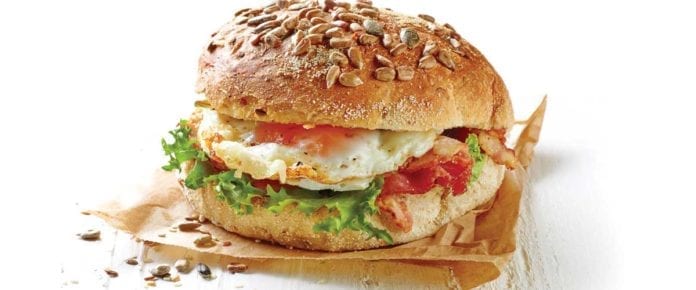As the new year approaches, many of us will undoubtedly be taking time off to reflect on the last 12 months and prepare for the year ahead. And while 2015 was a relatively lacklustre year for the foodservice market overall, there are certainly opportunities for growth and reasons for optimism as we begin 2016.
One of the largest challenges the foodservice market faced last year was changing consumer behaviour. For example, consumers stopped going out as frequently and as a result, overall restaurant traffic decreased in 2015, but cheque sizes increased (due in part to food inflation of 2.8 per cent), managing to keep sales relatively flat for the year at -1 per cent. Chains remained most resilient to traffic declines and therefore remained generally flat across most segments. Independents were less fortunate, posting declines across the board. In terms of daypart, both lunch and dinner performed relatively poorly on the year, both at the QSR and FSR level. Overall weekday traffic and parties with children also declined last year.
But there was also good news. Breakfast remains a bright spot, with double-digit traffic growth driven by QSR and casual-dining. Breakfast foods, including sandwiches, hash browns, baked goods, bacon and sausage, are among the top-growing menu items. And while both lunch and dinner took a hit in 2015, chicken sandwiches, steak sandwiches and burgers were among the top-performing items for the year — proving strategic operators can find ways to attract consumers by appealing to their specific preferences. Conversely, deli meat sandwiches, chicken, turkey and seafood entrées were among some of the year’s worst-performing items.
Beverage sales also proved somewhat contentious. While coffee was among the best-performing items of the year, both carbonated soft drinks and alcohol declined — much to the chagrin of operators relying on the high margins associated with beer, wine and spirits.
The Millennial Consumer
Another bright spot for 2015 was the growth of the millennial consumer. This key consumer segment performed extremely well and was largely responsible for offsetting declines for other generations. According to Statistics Canada, millennials are now the largest cohort in the Canadian workforce (surpassing Boomers). With Boomers at the tail end of their demographic dominance, and Generation X relatively outnumbered, this shift impacts the bottom line. Not surprisingly, millennials have a number of unique eating tendencies. They tend to highly over-index for visits based on “not having enough/limited time” and are more likely to favour options that include takeout, drive-thru and delivery. Furthermore, off-premise makes up 65 per cent of millennial visits versus 54 per cent for non-millennials; they also over-index for eating in the car or at work.
Better-For-You Claims
Another trend throughout 2015, which The NPD Group forecasts will continue into 2016, is the growth of ‘better for you’ offerings. We’ve seen a lot of recent activity around claims such as organic, gluten-free and locally sourced — much of which has been driven by fast-casual operators. One of the most popular claims over the past 12 months has been the ‘raised without’ claim (i.e. raised without added hormones or antibiotics. While the fast-casual segment led this charge, many large chain operators including A&W and McDonald’s have recently come out with similar claims with regard to beef, chicken, eggs and other key ingredients.
Looking Ahead
It was certainly a year to remember for the Canadian foodservice market and while many in the industry will recall the challenges they faced, savvy operators will leverage the opportunities that exist in order to succeed in 2016 and beyond.
Written By: Robert Carter
Volume 48, Number 9


















